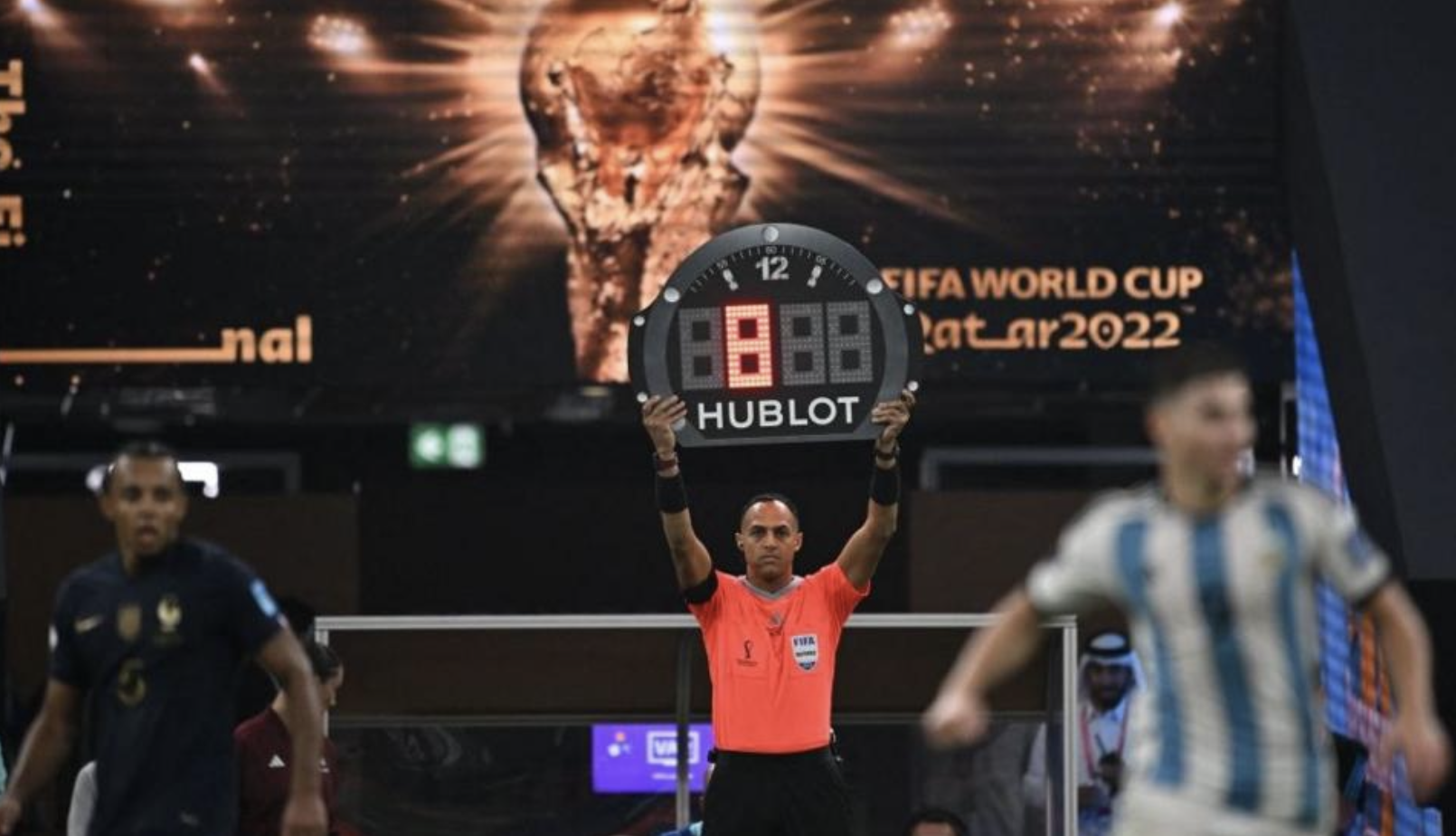The Qatar World Cup will be remembered as the tournament which finally saw Lionel Messi get his hands on the trophy – but the amount of stoppage time in matches was also one of its biggest talking points.
The tournament produced some of the longest World Cup games on record after Fifa instructed fourth officials to keep track of time lost, and we could be about to see the trend rolled out to all top domestic leagues from next season.
A change in the guidelines – rather than the laws – regards actual playing time is expected to be ratified at the IFAB’s annual general meeting on Saturday. But could it change the future of football forever?
Sixty-minute matches?
Despite being a 90-minute sport, the amount of football played in a match falls a long way short of 90 minutes. Stoppage time was introduced in 1891 to allow officials to add on more time to compensate for unusual breaks in play.
Originally these were for long injury stoppages, but in recent years the added time took into account multiple substitutions, video assistant referee checks, elongated celebrations and deliberate time-wasting.
But two problems remain – only the referee knows when a match will end, and matches have differing durations of the ball being in play.
To combat this a number of high-profile figures – including Netherlands legend Marco van Basten, ex-Premier League referee Mark Clattenburg and former Arsenal chief David Dein – have suggested football becomes a 60-minute sport, with the clock stopping every time the ball is out of play.
This might suggest that less football would be played, but many matches see the ball in play for much less than 60 minutes. Playing time at the 2018 World Cup in Russia was between just 52 and 58 minutes.
A stop-clock is such a radical change that it is unlikely to be introduced in the near future, but the 2022 Qatar World Cup showcased ways in which more playing time could be allowed. Much more was added at the end of each half.
How much time was added at Qatar 2022?
The first round of group games saw an average of 11 minutes eight seconds indicated as added time – four minutes in the first half and seven in the second. These figures, though only having a small sample size, slowly dropped as the tournament progressed:
| Stage | Time Indicated | Time Added |
|---|---|---|
| First round in group | 11:08 | 12:41 |
| Second round in group | 10:22 | 11:17 |
| Third round in group | 10:26 | 11:27 |
| Knockout stages | 8:49 | 9:39 |
All the above average times are higher than in previous tournaments, and it is not surprising the longest games on record – not including extra time – were played at the 2022 World Cup:
| Match | Added Time Indicated | Added Time Played |
|---|---|---|
| England v Iran | 24:00 | 27:03 |
| Argentina v Saudi Arabia | 13:00 | 20:09 |
| Argentina v Netherlands* | 15:00 | 18:39 |
| Uruguay v Ghana | 16:00 | 17:42 |
| Poland v Saudi Arabia | 17:00 | 17:02 |
| USA v Iran | 14:00 | 16:54 |
| Wales v Iran | 13:00 | 16:34 |
| France v Argentina* | 15:00 | 16:02 |
| South Korea v Ghana | 15:00 | 15:55 |
| England v France* | 12:00 | 15:20 |
| *Knockout phase |
The extreme case of England v Iran – because of a severe injury stoppage – saw 30% more time added on. But how much of this added time was actually used to play and how much was further wasted?
More time-wasting?
Football, often described as a free-flowing sport, is very much a stop-start competition. This is illustrated by the number of restarts during added time.
The England v Iran game had a minimum of 10 minutes of added time indicated. For the first 9:04 of this the ball was in play for an average of 42 seconds at a time, with play halting nine times. Then, with 56 seconds left, a stoppage of 3:26 saw a penalty awarded after a VAR check.
The referee deemed there was insufficient time to restart the game after Iran scored and blew for full time. Should the remaining 56 seconds have been allowed? What if it had been a one-goal game? Should it be the referee who decides when to call time?
Similar issues clouded the end of the South Korea v Ghana match. South Korea were pushing for an equaliser during the 10 minutes of indicated time at the end of the second half.
During the added time there were further stops for a substitution and treatment for an injury. The two breaks were timed at 1:42, meaning at least 11:42 would be played. However, at 10:52 Anthony Taylor blew the final whistle – just as South Korea were preparing to take a corner.
South Korea were incensed and manager Paulo Bento received a red card. What happened to the extra 102 seconds? Despite this, South Korea did manage to escape from their group – scoring an added-time winner in their final match.
So, despite substantial amounts of time being added, only about 50% was actually used to play football.
When the ball was in play, what happened during these extra minutes?
Late goals always have an exciting impact and Qatar 2022 was no different. During previous World Cups, second-half added time was generally below six minutes, so what happened in the games that went beyond that limit in 2022?
| Goals scored and cards awarded in the sixth minute and beyond of added time | ||||||||
|---|---|---|---|---|---|---|---|---|
| Minute | 6 | 7 | 8 | 9 | 10 | 11 | 12+ | Totals |
| Goals | 0 | 0 | 2 | 2 | 0 | 2 | 0 | 6 |
| Yellow cards | 2 | 2 | 1 | 2 | 5 | 2 | 1 | 15 |
Six late goals were scored – two condemned Wales to defeat against Iran, one allowed Tunisia to beat France, and one sent the Netherlands into extra time against Argentina.
The future?
Looking ahead, what will this mean for domestic football? The Premier League has seen ball-in-play time slowly reduce over the past decade, so the argument for more added time is a strong one.
While not a completely scientific evaluation, the six goals and 15 cards awarded during the extended minutes of added time in 64 World Cup matches would equate to a further 35 goals and 89 cards issued over a season of Premier League football.
That would be equivalent to about one extra goal per game-week, which in a sport of increasingly fine margins could greatly impact teams at either end of the table. ‘Fergie time’ might become more important than ever.


